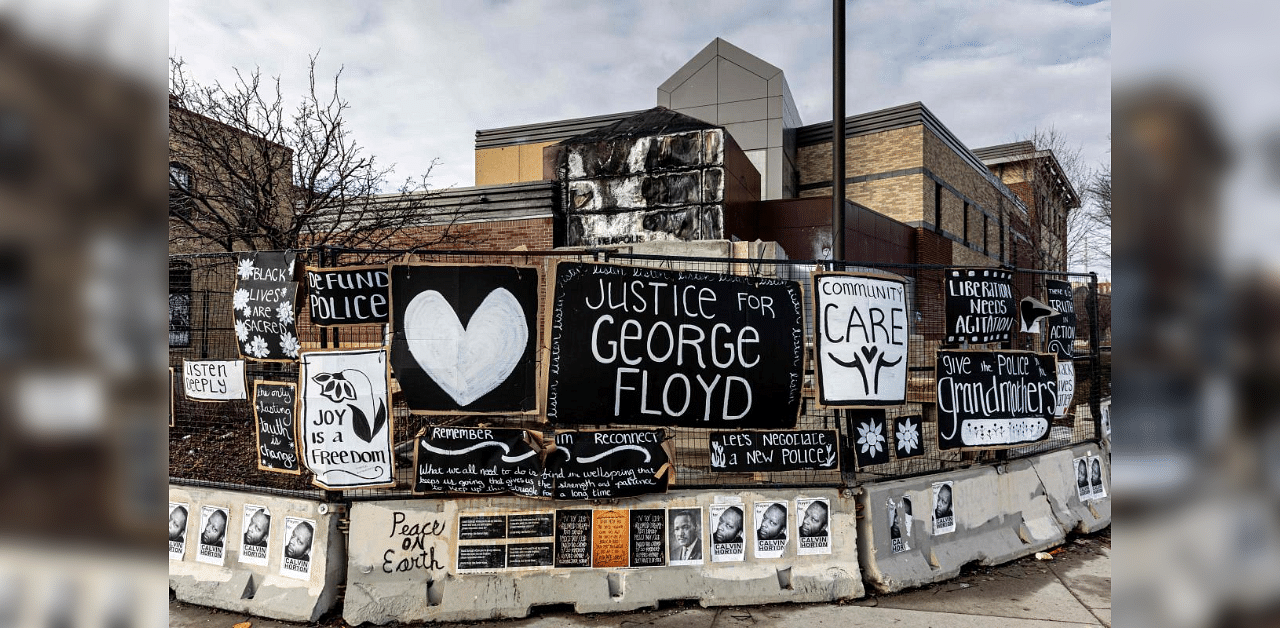
The Los Angeles Police Department severely mishandled protests last summer in the wake of George Floyd’s death, illegally detaining protesters, giving conflicting orders to its rank-and-file officers and striking people who had committed no crimes with rubber bullets, bean bags or batons, according to a new report released Thursday.
The department was not prepared for the protests to become violent despite similar turns in other cities, the 101-page report commissioned by the City Council said, and once officers were confronted with the violence, they quickly lost control, failing to rein in much of the most destructive behaviour while arresting protesters for minor offences.
The review of the LAPD is the latest to find serious fault with a police department’s response to the wave of protests that swept the country in the wake of Floyd’s death on May 25, and it comes as the officer whose actions set off the unrest, Derek Chauvin, goes on trial in Minneapolis.
The report was also highly critical of the department’s leadership, saying that high-ranking officers sometimes made chaotic scenes even worse by shifting strategies without communicating. In many cases, officers used “antiquated tactics” that failed to calm the more violent demonstrators.
Undercover officers who infiltrated the protests had no way to report criminal behaviour directly to supervisors and sometimes had to be rescued from the devolving crowd, the report said, adding that the department’s intelligence operations have become less effective as positions in that field were cut in favour of patrol units.
And while officers arrested thousands of people during the protests in late May, there was no clear plan for how to detain and process them, according to the report. In many cases, the police wrongly arrested protesters under a law that did not allow them to take the people into custody. Some protesters were injured so severely by “less lethal” munitions that they had to get surgery. The LAPD did not immediately respond to a request for comment on the report.
The review is one of three that has been investigating the LAPD response to the demonstrations, and it was completed by a panel of former police commanders and led by Gerald Chaleff, a veteran Los Angeles attorney who has served on police oversight panels in Los Angeles dating back to the city’s 1992 riots.
“There was a lack of preparation, a lack of planning,” Chaleff said of the LAPD in an interview, adding that the department “could have minimized” the destruction caused by a small group of people who stole from stores and vandalized the city during the protests.
He said most members of the protests were peaceful, but that “there were some people there to create chaos and cause problems.”
The New York Police Department, the nation's largest police force, faced similar criticism last year when both the New York state attorney general and New York City’s own watchdog issued scathing reports saying the department badly mishandled the mass demonstrations last summer.
Key to the New York Police Department’s failure was a lack of training among the police officers sent to patrol the marches, according to a report issued by the city’s Department of Investigation in December.
“The response really was a failure on many levels,” Margaret Garnett, the commissioner for the New York City Department of Investigation, said at the time.
Many officers were not trained in proper crowd control tactics and often engaged in “excessive enforcement” that inflamed tensions, the agency’s report said. That approach led to violent clashes between peaceful demonstrators and the police.
Enforcement during the height of New York City’s protests was overly aggressive and disproportionately impacted people of colour, according to a separate report issued by Letitia James, the New York state attorney general. More than 2,000 people were arrested during the city’s first week of demonstrations, and of those arrests, Black and Latino protesters were more likely to be charged with a felony than white protesters, according to James’ report. Her office received more than 1,300 reports of police misconduct stemming from those first weeks of protest in New York City, she said.
Chaleff, who once served as the LAPD’s special assistant for constitutional policing under former Chief William J. Bratton, who later led the NYPD, noted that the report was primarily concerned with the LAPD’s institutional response, not with any particular incident of police misconduct, a sign that the police had “allowed less violence” than in the past.
“I think there’s been progress,” he said. “But you have to be prepared for what’s coming, and you have to have the elected and appointed leadership that understands what is required and creates a culture for the kinds of responses that are necessary.”